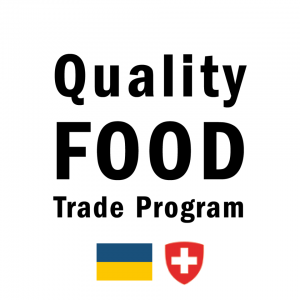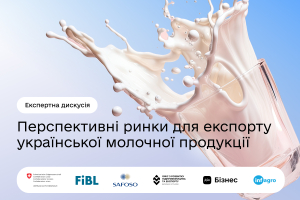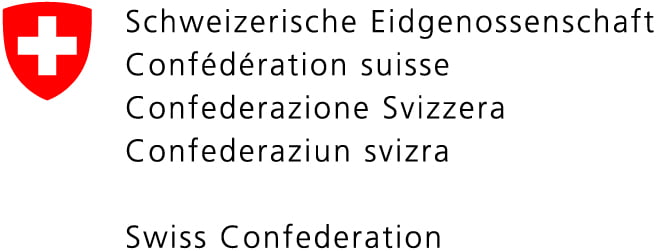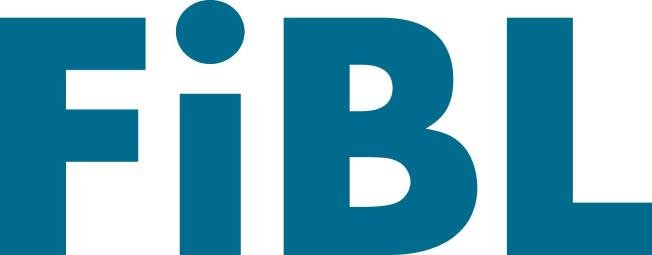Prospects for Ukrainian Dairy Products Entering International Markets: Results of the Third Expert Discussion
On September 19, the third expert discussion on the prospects of Ukrainian dairy products entering international markets took place. During the event, key export directions were discussed, including Saudi Arabia and Morocco, as these countries demonstrate high demand for dairy products, creating significant opportunities for Ukrainian producers.
In his welcome speech, Ihor Lotskin, Director of the Department of Food Safety and Veterinary Medicine at the State Service of Ukraine on Food Safety and Consumer Protection, noted that work is underway to open 11 markets that may be of interest to dairy product exporters, including Chile, Indonesia, India, Costa Rica, Colombia, Brazil, Venezuela, and others.
The speakers at the event included Maks Fasteyev, Olga Gvozdyova, Galyna Perepelytsia, Vlada Sychkova, and Yuri Shevchuk.
Maks Fasteyev, Project Partner Infagro, Strategic Development Advisor EU Integration Committee of the Union of Dairy Enterprises of Ukraine presented an overview of potential markets for Ukrainian dairy products, which includes information on global trends, trade statistics, macroeconomic indicators, milk consumption, and retail volumes.
Key findings include:
- EU countries are promising for cooperation, as they demonstrate financial stability, high purchasing power, and convenient logistics routes. However, attention should be paid to the possible reinstatement of dairy product export quotas in 2025 and the high supply of these products in EU countries.
- The markets of the Caucasus and Central Asia have strong potential for selling Ukrainian products, despite the challenges posed by Russian aggression.
- The Middle East and North Africa are regions with high export potential for Ukrainian dairy products. However, it’s important to consider the significant geopolitical risks, economic instability, and inflation in these areas.
- The dynamics of dairy imports in the regions of North and Southeast Asia show substantial potential for domestic producers amid global instability. This is driven by population and economic growth in these regions.
Olga Gvozdyova, an advisor to the director of the Entrepreneurship and Export Promotion Office, presented a survey on the selection of priority countries for review and the preparation of guides for dairy product exporters, which can be accessed via a link (in Ukrainian only).
In addition, she shared consumption forecasts for the markets of Morocco and Saudi Arabia, detailing the main players, competitors, and sales channels for dairy products. She noted the growing popularity of Private Label products, low-salt and low-cholesterol products, sugar-free dairy products, and those with enhanced nutritional properties.
Galyna Perepelytsia, an invited consultant and certified expert on EU export issues, technical regulations, and foreign market access, discussed:
- Access to the markets of Morocco and Saudi Arabia, including import duties, taxes, customs clearance procedures, producer accreditation, and the issuance of veterinary certificates.
- Requirements for the production and circulation of dairy products, including safety regulations and standards, labeling, shelf life, nutritional information, and packaging and transportation requirements.
- Market segments, networking, and establishing contacts.
The legislative acts can be found in practical guides on dairy exports to Morocco and Saudi Arabia (in Ukrainian only).
Despite the significant prospects, there are certain risks. For example, Saudi Arabia imposes high customs tariffs on dairy product imports, which may make competition with local producers more difficult. The specificity of customs clearance and accreditation procedures, which require adherence to numerous bureaucratic steps, is also crucial—this was highlighted by Vlada Sychkova, the chief specialist of the International Cooperation, Trade, and European Integration Department of the State Service of Ukraine on Food Safety and Consumer Protection, during the panel discussion.
Yuri Shevchuk, Vice President of Olam Food Ingredients and Head of the Dairy Division for the CIS & MENA regions, noted during the panel discussion that Morocco has increased its import of skimmed milk powder in recent years, with imports rising to 35,000 tons. Saudi Arabia also shows strong demand for skimmed milk powder, importing about 70,000 tons annually. A key factor for the successful entry of Ukrainian producers into these markets is the standardization of dairy products and compliance with quality and logistics requirements.
Experts also discussed logistical challenges related to the war, including the need to use alternative ports for export, such as the Romanian port of Constanța.
The experts concluded that the Ukrainian dairy sector has significant potential for development in international markets. However, successful exports will depend on producers’ ability to adapt to the requirements of each market, meet necessary standards, and consider the specifics of local consumers and competitive conditions.
The video is available at the link (in Ukrainian only).
This year’s expert discussions are aimed at adapting and transforming export opportunities for Ukrainian dairy producers in 2024 in the context of war and changing dairy balances.
The series of events is organized by the State Institution “Entrepreneurship and Export Promotion Office” , the national project Diia.Business, and the INFAGRO analytical agency with the support of Switzerland within the framework of the Swiss-Ukrainian Program “Higher Value Added Trade from the Organic and Dairy Sector in Ukraine” (QFTP), implemented by the Research Institute of Organic Agriculture (FiBL, Switzerland) in partnership with SAFOSO AG (Switzerland).




